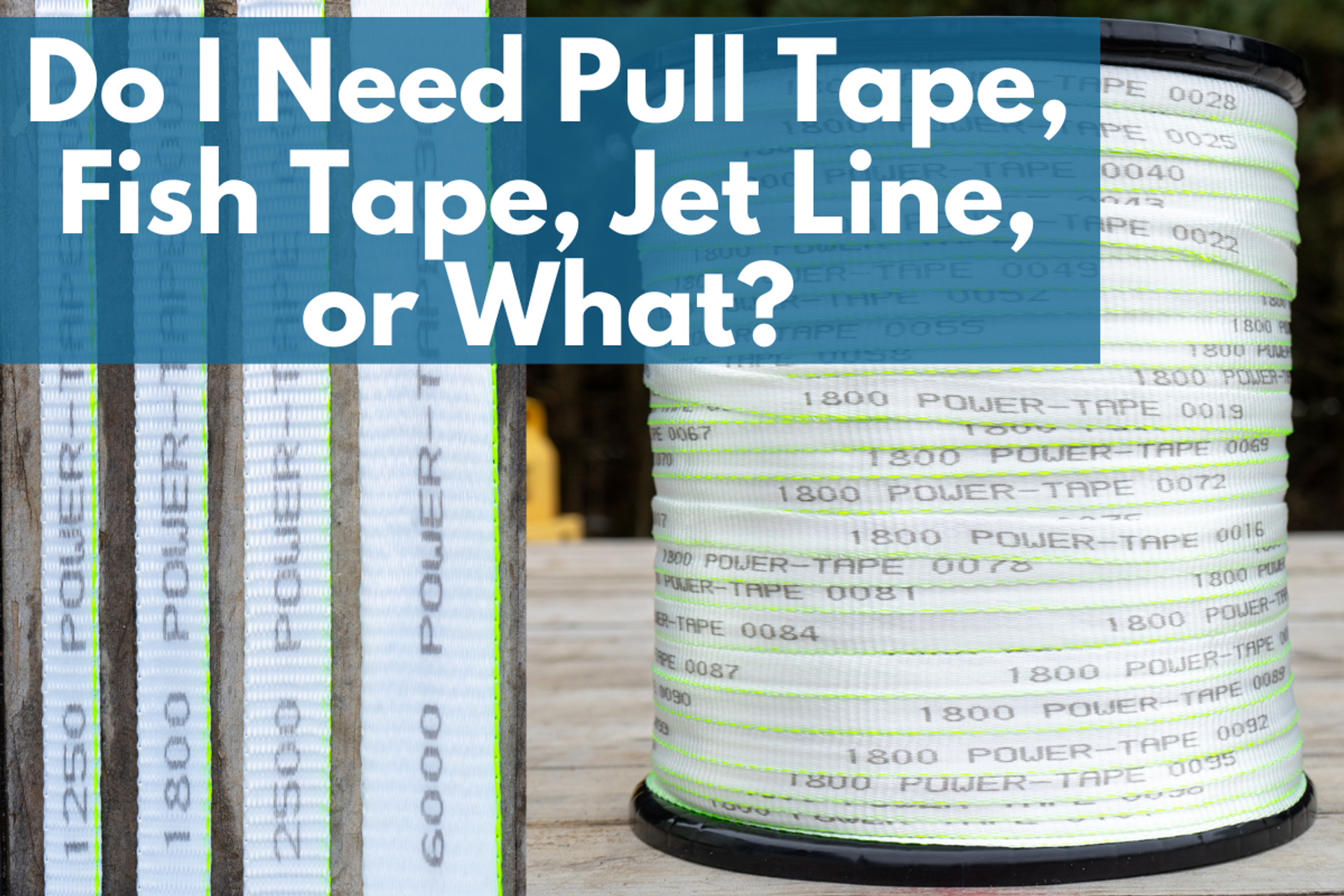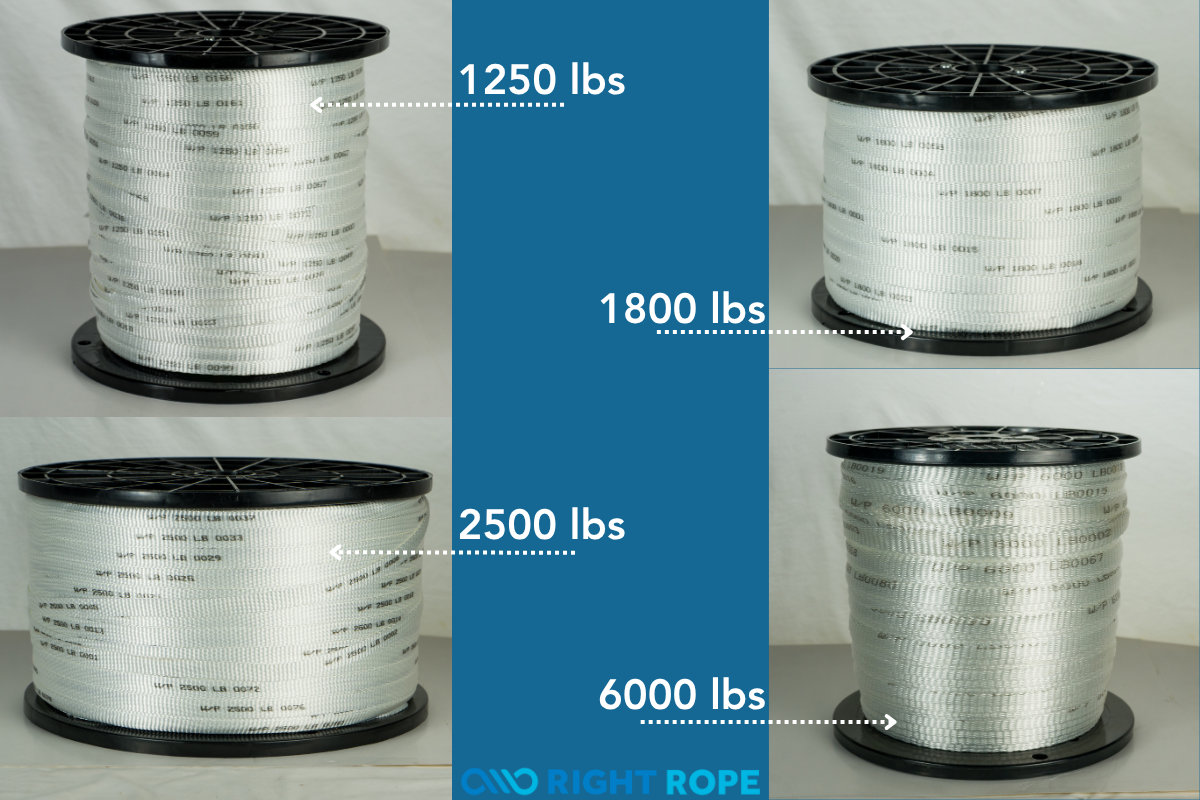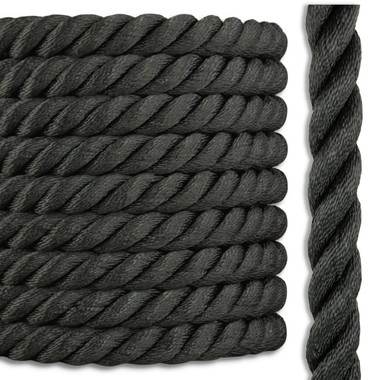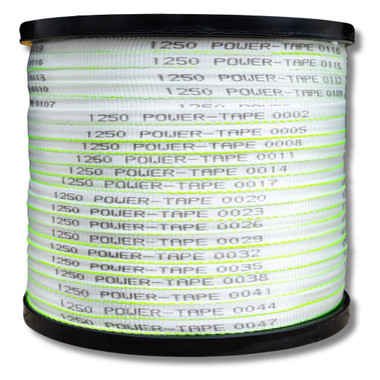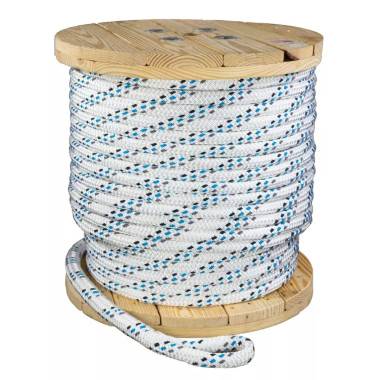Do I Need Pull Tape, Fish Tape, Jet Line or What?
Estimated 0 min read
If you’ve ever had to pull wire through conduit, you know how quickly a simple job can turn into a frustrating mess. That’s where pull tape comes in. Also known as mule tape, this flat, high-strength tape makes wire pulling faster, smoother, and a whole lot easier, especially when the conduit run gets long or full of bends.
In this blog, we’ll answer the most common questions people search for about pull tape, break down why it's better than rope, jet line, or fish tape in many scenarios, and help you choose the right type for your job. Here’s everything you need to know about Pull Tape to make an informed decision.
What Is Pull Tape?
Pull tape is a flat-woven polyester tape designed specifically for pulling electrical wire, telecom cable, or fiber optic lines through conduit. Unlike traditional round rope, pull tape lays flat. That gives it a huge advantage: less friction, better handling, and less chance of damage during a pull.
Most high-quality pull tape comes pre-lubricated to help it glide through conduit, and it’s usually marked with footage so you can measure as you go.
Why Do People Still Call It Mule Tape?
Good question. There are a few theories as to why pull tape is often called mule tape, but no one really knows for sure. It may have been a brand name that stuck, much like how facial tissues are often called Kleenex, even though Kleenex is a brand, not a product.
Others claim that mule tape got it’s name for mule-like qualities such as strength, reliability and pulling power. Either way, whether someone calls it pull tape, mule tape, or even conduit pulling tape, they’re all talking about the same thing.
How Strong Is Pull Tape?
Pull tape is usually sold by strength instead of width, so keep that in mind while you’re shopping pull tapes. Here's a basic chart:
|
Width |
Tensile Strength |
|
1/2″ |
~1,250 lbs |
|
5/8″ |
~1,800 lbs |
|
3/4″ |
~2,500 lbs |
|
1 ¼ ″ |
Up to 6,000 lbs |
Choosing the right strength depends on your job. If you’re pulling heavier cable, working over long distances, or going through multiple bends, it’s smart to size up. Aim for at least 25% more tensile strength than your estimated pulling force.
Why Use Pull Tape Instead of Rope, Jetline, or Fish Tape?
Here’s why professionals prefer pull tape for most serious wire-pulling jobs:
Flat = Less Friction
The flat profile glides through conduit more smoothly than rope or jetline.
High Strength
Pull tape is stronger than fish tape or string lines, especially for long pulls with heavy cable.
Footage Markings
Built-in measurements help you know exactly how much cable you’ve pulled—no guesswork.
Easy on Hands
It doesn’t bite into your palms like thin wire or twine.
Bends? No Problem
Fishtape can get kinked and even break off on longer runs. Jet line can cut into the pvc on bends. Pull Tape won’t do either.
Packs Small
Even long lengths store neatly and don’t tangle like rope.
If you’re doing a short run in straight pipe, fish tape or jetline might do the trick. But for anything bigger or more complicated, pull tape is the better tool, hands down.
Does Pull Tape Stretch?
Nope, or at least not much. Low-stretch polyester is part of what makes pull tape so reliable. You won’t get that rubber band effect that you sometimes see with pulling rope. That’s a big deal when you're trying to apply steady tension and avoid damaging your cable.
Can You Reuse Pull Tape?
Technically, yes. Pull tape is pretty tough stuff, especially if it’s polyester with good abrasion resistance. But after a hard pull, you should inspect it closely. Frayed or stretched tape should be tossed, no sense risking damage to your cable or gear.
What Size Pull Tape Should I Use?
Here’s a quick guide based on job type:
- 1/2" tape – Short residential runs, low-voltage wire
- 5/8" tape – Most medium-sized commercial jobs
- 3/4" or 1 ¼ " tape – Long conduit pulls, telecom bundles, large copper cable
Rule of thumb: if you're unsure, go with the stronger size. It won't cost much more and can save you big headaches.
Can You Use Mule Tape for Camping or DIY?
Absolutely. People use pull tape for all kinds of creative stuff:
- Hanging bear bags or tarps
- Lightweight tie-downs
- Clotheslines
- Emergency lashings
- DIY pulley systems
- Pull Tape Horse Halter
Just remember: don’t trust it with your life. It’s not climbing-rated or made for personal fall protection. Great for camping, terrible for rappelling.
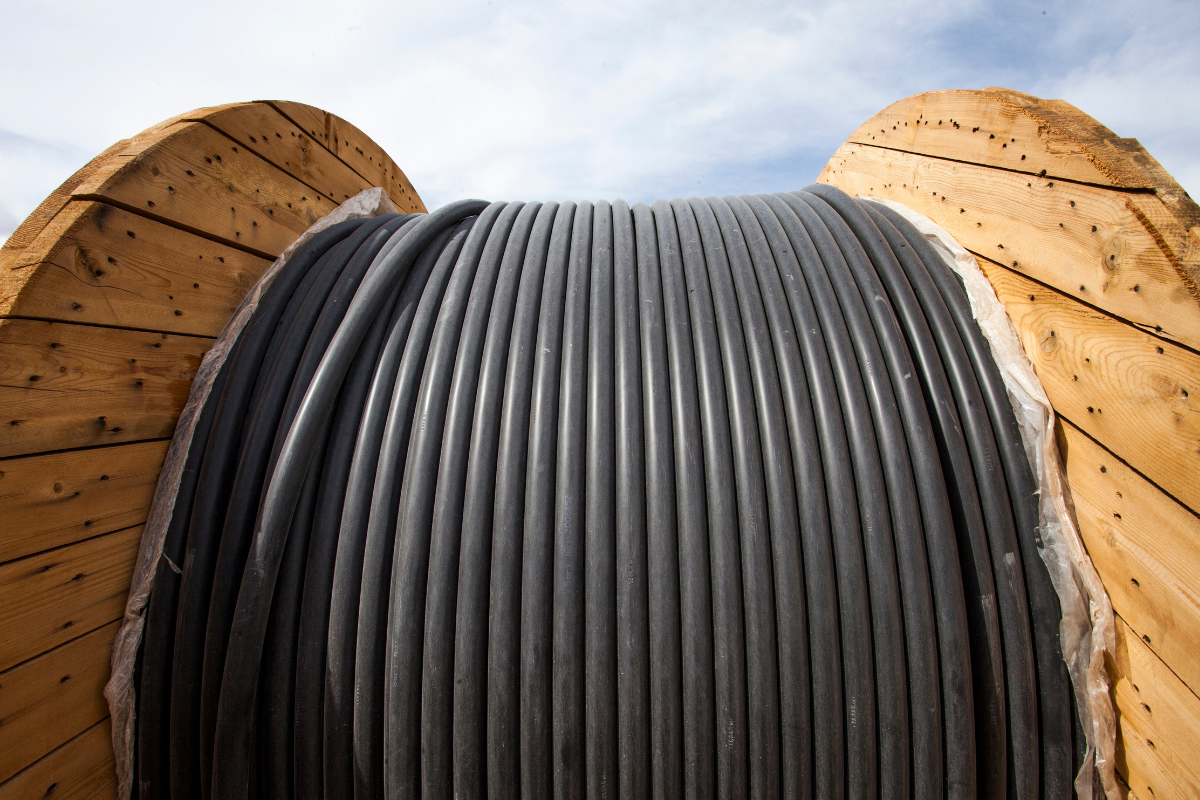
Common Questions About Pull Tape
What is the difference between pull tape and fish tape?
Fish tape is usually a narrow steel or fiberglass tool used for fishing wire through short conduit runs. Pull tape is a stronger, flat polyester tape used for pulling heavier cables through longer, more complex conduit paths.
Is mule tape/pull tape better than pulling rope?
It depends on the pull, and the rope. Pull tape has lower friction and a great strength to weight ratio, but it only reaches 6000 lb breaking strength. For pulls 6000+ lbs, Wire Pulling Rope is better suited. At the high end of Wire Pulling Rope a 1” rope has a breaking strength of 42,000 lbs. No way you’re getting that out of a pull tape!
Can you use pull tape with a winch?
Yes. Many contractors use pull tape with powered cable tuggers or winches, especially for large or multi-cable pulls. Just make sure your tape is rated for the load, and always use proper knots and safety precautions.
How do you store pull tape?
Keep it dry and coiled on a spool or reel. It’s best not to wad it up in a bucket, although many contractors probably do and get away with it. Keep it out of the sun and away from moisture. Clean storage keeps the tape smooth and ready for the next job.
Where can I buy high-quality pull tape?
You want pull tape that’s made in the USA, properly rated for your job, and pre-lubricated with footage markings. Look for a supplier that understands professional cable work and offers a range of sizes and strengths. Rightrope.com has great, made in USA pull tape that’s ready to ship right now.
Where can I buy bulk pull tape?
Rightrope has got you covered. If you know you’ll use it, our bulk pull tape can save you a ton of money as you can order by the pallet, get a big discount, and pay all your shipping costs at once. It’s a real no-brainer if you use pull tape all year long.
Final Thoughts
Pull tape is one of those tools that doesn’t get much attention until you try to do a big job without it. Whether you call it mule tape, cable pulling tape, or flat polyester line, this stuff is built to make wire pulls faster, easier, and safer.
If you’re tired of fighting with old rope or fish tape that gets jammed every few feet, it might be time to upgrade your gear. Grab the right size, tie it off properly, and pull with confidence.
